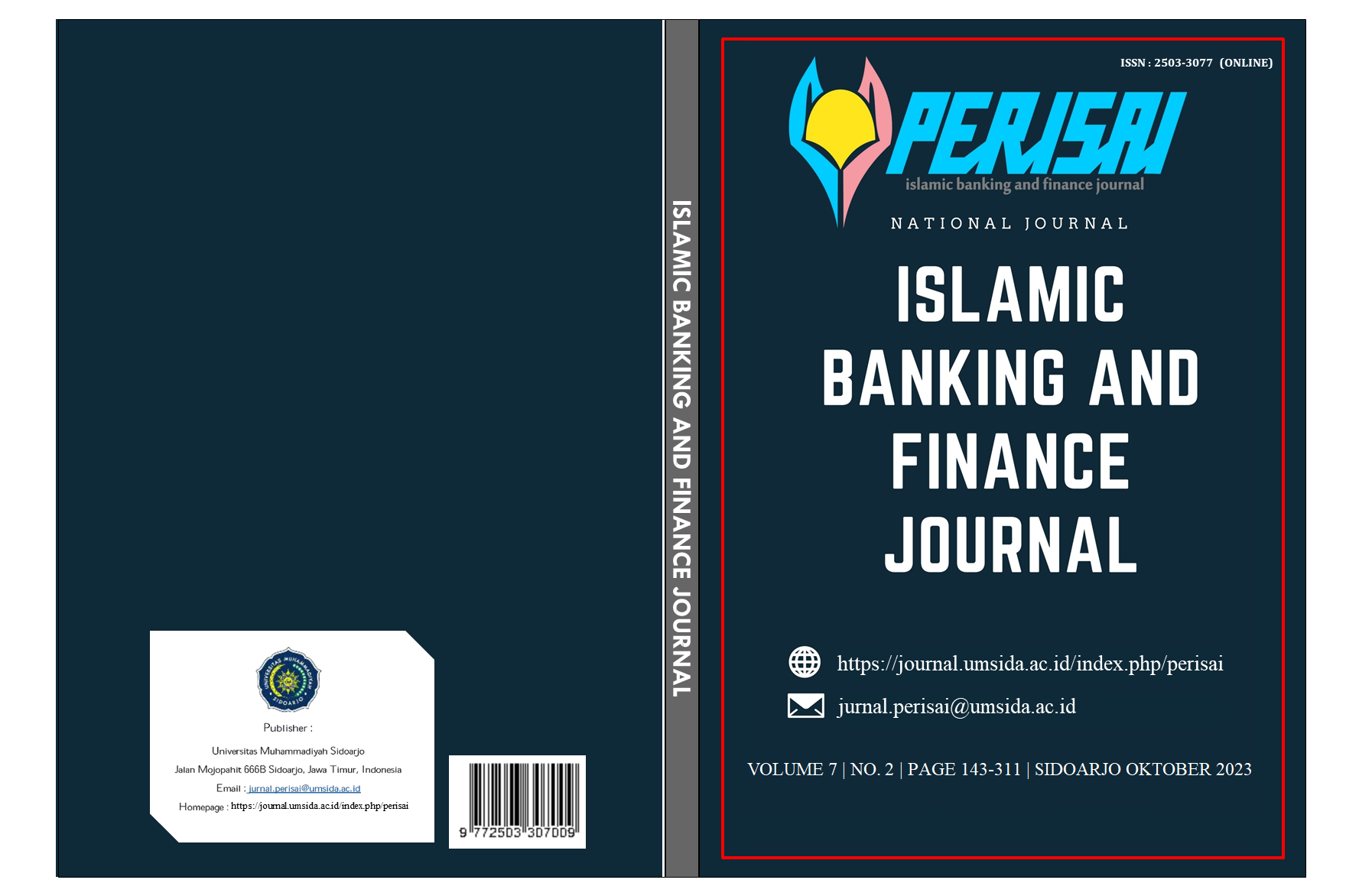Analysis of MSME Capital Using Sharia Fintech Peer to Peer Lending
Analisa Permodalan UMKM Menggunakan Fintech Peer to Peer Lending Syariah
DOI:
https://doi.org/10.21070/perisai.v7i2.1696Keywords:
Fintech, Sharia Peer to Peer Lending, MSME CapitalAbstract
As one of the pillars of the economy in Indonesia, it is proven that MSMEs are able to survive the Covid-19 pandemic with various innovations they have implemented, but there are still several obstacles in the development of MSMEs themselves. MSMEs, especially for the micro business scale in Indonesia, are still classified into segments that have limited access to formal financial institutions (unbankable population). The results of the PWC survey in 2019 The biggest problem of MSMEs is the problem of capital, and in an effort to obtain additional capital, around 74% of the micro segment cannot access financing from the formal financial sector. Increasing access to finance itself is one of the strategies to achieve Sustainable Development Goals (SDGs). Based on previous research, Islamic fintech has a role in driving SDGs targets, especially the targets to (1) eradicate poverty and (2) hunger, and (3) reduce inequality in wealth distribution. In this study we conducted indepth interviews with several MSME players and Islamic fintech companies. The lack of literacy related to fintech with the sharia peer to peer lending scheme makes MSMEs afraid to do business financing with this scheme, even though this scheme is very suitable for the unbankable population because the financing requirements are easy and fast in the disbursement process.
References
Alfaris, M. R., Mursida, M. W., Irfan, M., & Syahroni, D. (2019). Model Regulasi Financial Technology Syariah dalam Kerangka Hukum Indonesia: Studi Perbandingan Malaysia dan Inggris. Legislatif, 3(1), 73–96.
Arifin, B., & Nurdyansyah. (2018). Buku Ajar Metodologi Penelitian Pendidikan (1st ed.). Retrieved from https://docplayer.info/168747087-Buku-ajar-metodologi-penelitian-pendidikan.html
Kobadilov, B., Omarov, G., & Yermekbayeva, D. (2020). Financial technologies trends and how they will shape financial markets. The Economy: Strategy and Practice, 15(2), 151–157. https://doi.org/10.51176/jesp/issue_2_t13
Laldin, M. A., & Furqani, H. (2019). Fintech and Islamic finance. Fintech In Islamic Finance, 113–119. https://doi.org/10.4324/9781351025584-8
Latifah, F. N., Mawardi, I., & Wardhana, B. (2022). Threat of Data Theft (Phishing) Amid Trends in Fintech Users During the Covid-19 Pandemic (Study Phishing In Indonesia). Perisai : Islamic Banking and Finance Journal, 6(1), 74–86. https://doi.org/10.21070/perisai.v6i1.1598
Maulana, Y., & Wiharno, H. (2022). Fintech P2P Lending dan Pengaruhnya Terhadap Pertumbuhan Ekonomi Indonesia. Indonesian Journal of Strategic Management, 5(1). https://doi.org/10.25134/ijsm.v5i1.5741
Muhson, A. (2006). Teknik Analisis Kuantitatif. Makalah Teknik Analisis II, 1–7.
Ototritas Jasa Keuangan. (2021a). Perusahaan fintech lending berizin dan terdaftar di OJK per November 2021. Retrieved from www.ojk.go.id/id/kanal/iknb/financial- technology/Pages/Penyelenggara-Fintech-Lending-Terdaftar-dan-Berizin- di-OJK-per-17-November-2021.aspx
Ototritas Jasa Keuangan. (2021b). Statistik Fintech Indonesia per Juli 2021. Retrieved from https://www.ojk.go.id/id/kanal/iknb/data-dan- statistik/fintech/Pages/Statistik-Fintech-Lending-Periode-Juli-2021.aspx.
Shaikh, S. A. (2021). Using Fintech in scaling up Islamic microfinance. Journal of Islamic Accounting and Business Research, 12(2), 186–203. https://doi.org/10.1108/JIABR-10-2019-0198
Siharis, B. R. I. K. (2019). Pengaruh Financial Technology (Fintech) Terhadap Perkembangan UMKM DI Kota Magelang. Jurnal Prosiding Seminar Nasional Dan Call For Papers, 347–356.
Yahya, A., Affandy, A., & Narimawati, U. (2020). Pengembangan UMKM Melalui Pemanfaatan Model Layanan Fintech Syariah Ammana.id. Is The Best Accounting Information Systems and Information Technology Business Enterprise This Is Link for OJS Us, 5(2), 106–120. https://doi.org/10.34010/aisthebest.v5i2.3049
Yin, K. R. (2011). Qualitative Research form Start to Finish. New York: The Guilford Press.







